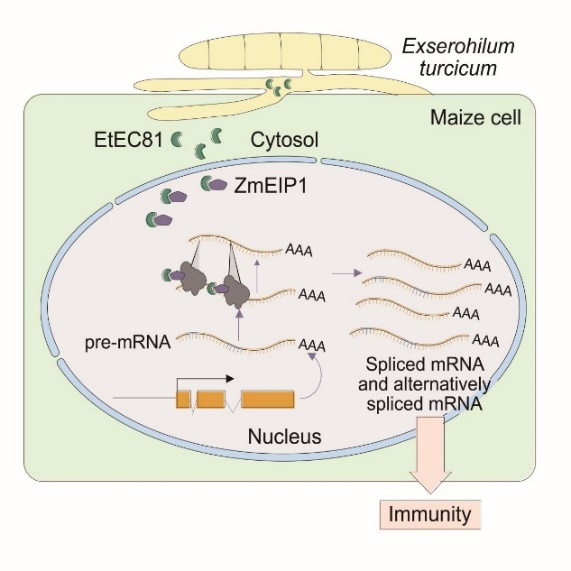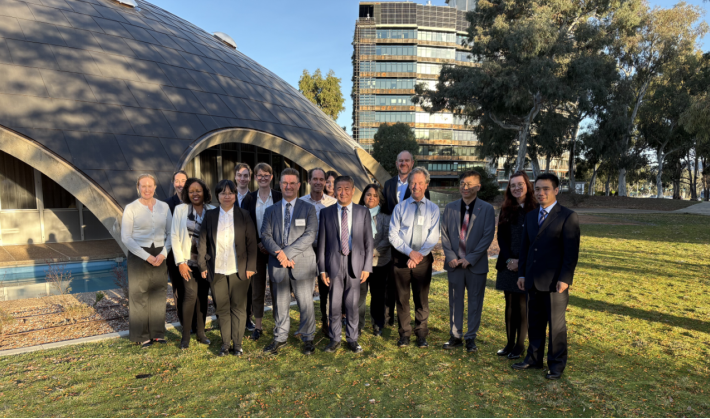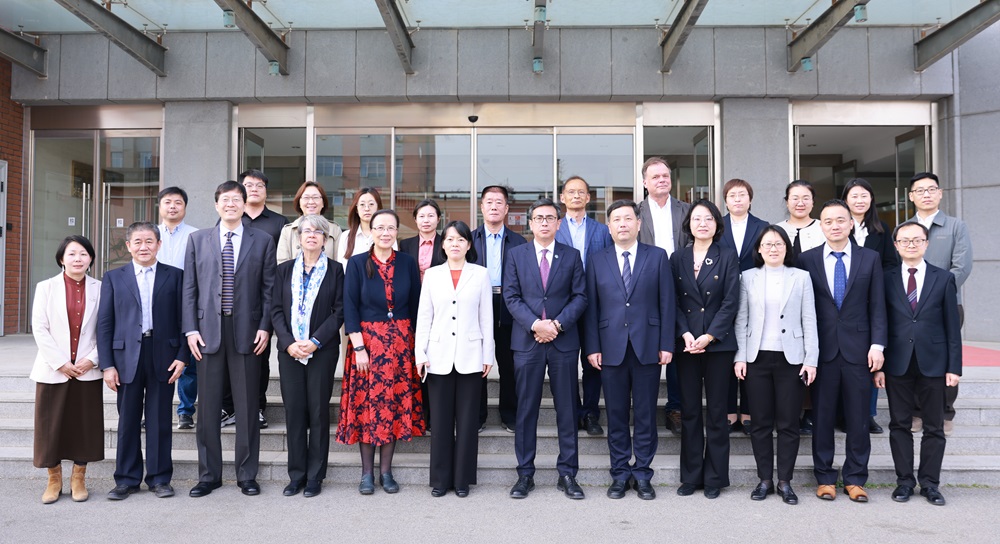IPPCAAS Deciphers Novel Mechanism by Which Exserohilum turcicum Regulates Host Alternative Splicing to Activate Plant Immunity in Maize
Recently, the Grain Crop Fungal Disease Monitoring and Control Team at the Institute of Plant Protection, Chinese Academy of Agricultural Sciences (IPPCAAS), published a research paper titled The Exserohilum turcicum effector EtEC81 reprograms alternative splicing in maize and activates immunity in the journal Cell Reports. The study uncovered a molecular mechanism by which the Exserohilum turcicum effector protein EtEC81 activates plant immunity through reprogramming host alternative splicing, providing new theoretical insights and genetic resources for understanding maize- E. turcicum interactions and advancing green control strategies for northern corn leaf blight.
Alternative splicing of precursor mRNA (pre-mRNA) is critical for plant growth, development, and immune responses. Pathogens often secrete effector proteins to disrupt host pre-mRNA splicing and suppress immunity. Northern corn leaf blight, caused by E. turcicum , is a globally significant threat to maize production. Current research on this pathogen has focused on physiological race differentiation or screening of resistance genes and materials. However, due to the low genetic transformation efficiency of E. turcicum , knowledge of its effector proteins remains limited.
To explore the impact of E. turcicum effectors on alternative splicing, researchers employed a splicing reporter system and identified a key effector—EtEC81 ( E. turcicum effector 81), that significantly regulates plant alternative splicing. EtEC81 encodes three consecutive zinc finger domains (ZnF_C2H2) and a nuclear localization signal (NLS), with subcellular localization confirming its nuclear presence. Knockout of EtEC81 enhanced the pathogenicity of E. turcicum mutants, while heterologous overexpression of EtEC81 triggered maize immune responses—including reactive oxygen species (ROS) bursts, upregulation of defense genes—and cell death.
Using yeast two-hybrid library screening, the team identified a maize interacting protein, ZmEIP1, a positive regulator of immunity that interacts with spliceosome components (e.g., U1/U2 snRNP, Prp19 complex) and participates in pre-mRNA splicing. The binding of EtEC81 to ZmEIP1 enhanced ZmEIP1’s splicing regulatory capacity, jointly inducing 119 co-differential splicing events. RIP-seq analysis revealed that EtEC81 possesses RNA-binding activity but primarily modulates alternative splicing of downstream genes indirectly through ZmEIP1. This study elucidates a novel mechanism by which the E. turcicum effector EtEC81 reprograms maize pre-mRNA alternative splicing via targeting ZmEIP1 to activate immunity.
Postdoctoral researcher Haiyue Yu from IPPCAAS; Shitao Shi (former joint postdoctoral fellow between CAAS and the Agricultural Genomics Institute, now a researcher at Xianghu Laboratory); and Ph.D. candidate Na Ning from CAAS are co-first authors of the paper. Researcher Wende Liu from CAAS is the corresponding author. The research was supported by the National Key Research and Development Program of China, the Zhejiang Provincial Key Research and Development Program, and the Agricultural Science and Technology Innovation Program of CAAS.

-
 IPPCAAS Experts Visit Australia to Promote In-Depth China–Australia Cooperation in Plant Biosafety
IPPCAAS Experts Visit Australia to Promote In-Depth China–Australia Cooperation in Plant Biosafety -
 China-France cooperation in plant protection was further strengthened
China-France cooperation in plant protection was further strengthened -
 New progress was made for the Lao PDR – China Joint Laboratory for Plant Protection
New progress was made for the Lao PDR – China Joint Laboratory for Plant Protection -
 Collaboration on sustainable agriculture practices highlighted at the MARA China – CABI Joint Lab meeting
Collaboration on sustainable agriculture practices highlighted at the MARA China – CABI Joint Lab meeting
